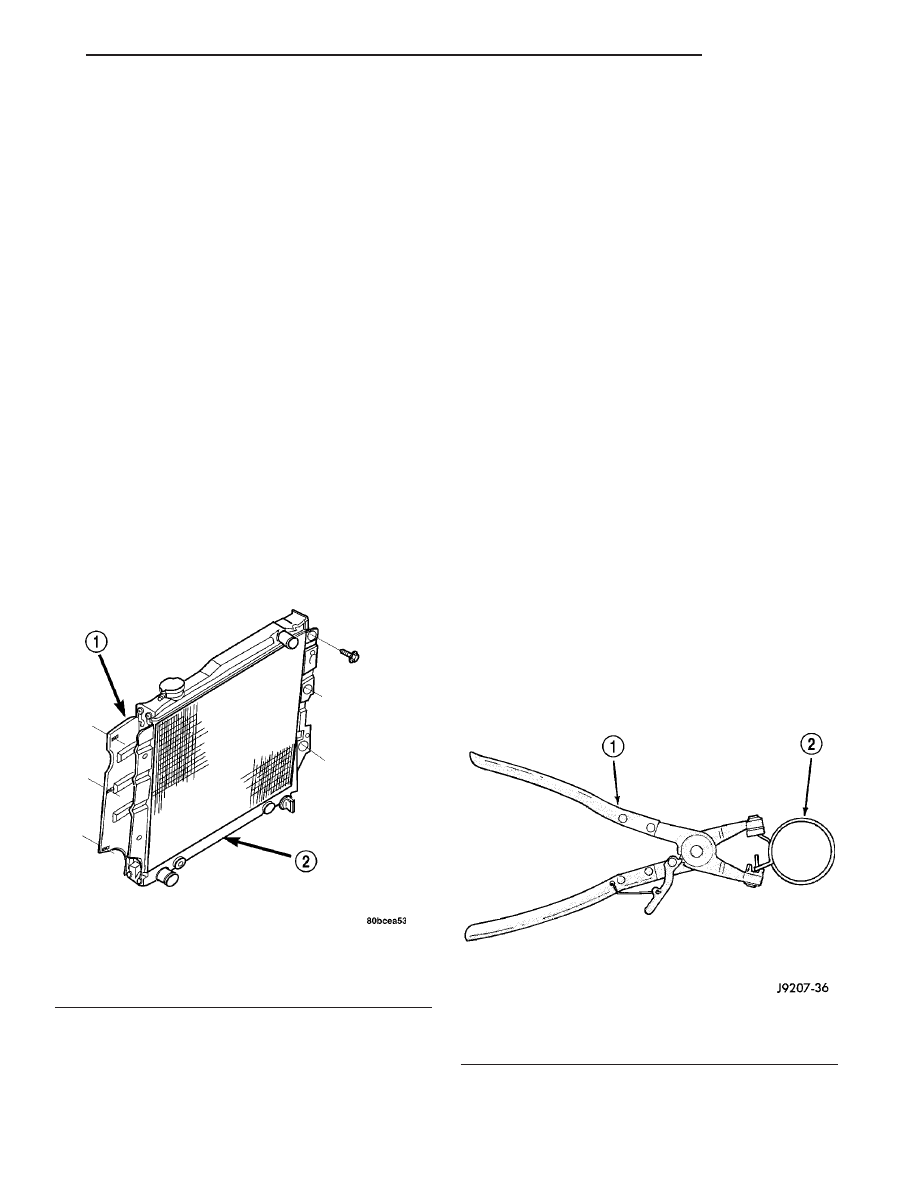Jeep Wrangler TJ. Manual - part 268

CAUTION: When installing a serpentine accessory
drive belt, the belt MUST be routed correctly. If not,
the engine may overheat due to the water pump
rotating in the wrong direction.
(3) Install accessory drive belt (Refer to 7 - COOL-
ING/ACCESSORY DRIVE/DRIVE BELTS - INSTAL-
LATION).
RADIATOR
DESCRIPTION
CAUTION: Plastic tanks, while stronger than brass,
are
subject
to
damage
by
impact,
such
as
wrenches, mishandling, etc.
A heavy duty down-flow aluminum/plastic radiator
is used (Fig. 18). The radiator consists of an alumi-
num core and plastic end tanks, which are fastened
to the core with clinch tabs and sealed with a high
temperature rubber gasket. On automatic transmis-
sion equipped vehicles, the lower tank contains a
concentric-tube transmission oil cooler.
If the plastic tank has been damaged, individual
parts are not available, and the radiator must be
replaced.
OPERATION
As air passes through the radiator core, the heat
within the coolant is dissipated into the ambient air.
DIAGNOSIS AND TESTING - RADIATOR
COOLANT FLOW
The following procedure will determine if coolant is
flowing through the cooling system.
If engine is cold, idle engine until normal operating
temperature is reached. Then feel the upper radiator
hose. If hose is hot, the thermostat is open and water
is circulating through cooling system.
REMOVAL
WARNING:
DO
NOT
REMOVE
THE
CYLINDER
BLOCK DRAIN PLUGS OR LOOSEN THE RADIATOR
DRAINCOCK WITH THE SYSTEM HOT AND PRES-
SURIZED. SERIOUS BURNS FROM THE COOLANT
CAN OCCUR.
Do not waste reusable coolant. If the solution is
clean, drain the coolant into a clean container for
reuse.
WARNING: CONSTANT TENSION HOSE CLAMPS
ARE USED ON MOST COOLING SYSTEM HOSES.
WHEN REMOVING OR INSTALLING, USE ONLY
TOOLS DESIGNED FOR SERVICING THIS TYPE OF
CLAMP, SUCH AS SPECIAL CLAMP TOOL NUMBER
6094 (Fig. 19). ALWAYS WEAR SAFETY GLASSES
WHEN SERVICING CONSTANT TENSION CLAMPS.
CAUTION: A number or letter is stamped into the
tongue of constant tension clamps (Fig. 20). If
replacement is necessary, use only an original
equipment clamp with matching number or letter.
Fig. 19 Hose Clamp Tool - Typical
1 - HOSE CLAMP TOOL 6094
2 - HOSE CLAMP
Fig. 18 Downflow Radiator - Typical
1 - DOWNFLOW RADIATOR
2 - INTEGRAL TRANSMISSION OIL COOLER (INTERNAL TO
RADIATOR)
TJ
ENGINE
7 - 33
FAN DRIVE VISCOUS CLUTCH (Continued)